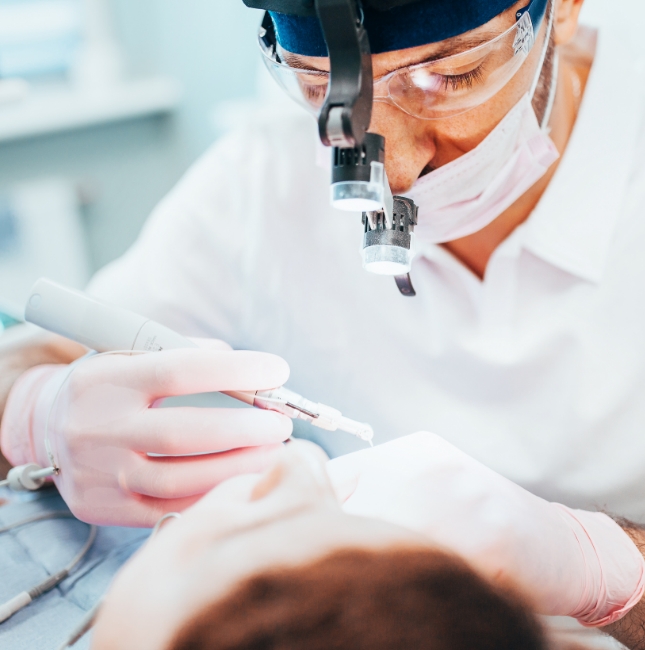
Over 35 years of experience
YOUR DENTISTS IN
PLATEAU MONT-ROYAL
The distinguishing feature of our clinic is its pioneering use of technology. In addition to paperless management of dental records, numerous technologies allow us to provide dental care comfortably, quickly, and with great precision.
Root Canal
As dental professionals, we do our best to help you keep your own teeth. This means, however, that we must sometimes perform a root canal to ease discomfort in a diseased tooth or even save the tooth from being pulled or replaced.
By keeping your natural teeth, you prevent problems with the jaw and gums, and neighboring teeth maintain their position. Thus, you avoid having to replace them with a bridge or an implant-supported crown.

When is a root canal needed?
The dental pulp can be damaged by a crack in the enamel, by deep decay or by an accident. Bacteria can then penetrate the tooth and infect the pulp, which can cause pain or inflammation. Sometimes the pulp becomes infected or dies without pain.
Most of the time, the tooth can be saved by a root canal, but there are some rare cases when the tooth will have to be pulled. Your dentist will want to discuss the options with you.
How it’s done
- After giving you a local anesthetic, the dentist drills a small opening in the tooth to reach the root canal system and pulp.
- The dentist then meticulously cleans out the pulp and fills the void with a rubber-like material that will be melted to bond with the tooth.
- Finally, the dentist seals the opening with either a temporary or permanent filling to make your tooth look as natural as possible. If your remaining tooth is too weak, other dental restorations (such as a crown) may have to be considered.
For the treatment to be a success, your dentist may prescribe antiseptic treatments and special brushing to be done at home – or even antibiotics.
Things to remember
Although a root canal can be performed in one appointment, it may take several visits depending on the degree of pulp damage or spread of infection. Also, after the treatment, you will probably experience tenderness in and around the tooth.
Your dentist is there to walk you through the different steps, so don’t be afraid to ask questions!
DO YOU WANT TO MAKE AN APPOINTMENT WITH ONE OF OUR DENTISTS?
Contact - EN
"*" indicates required fields